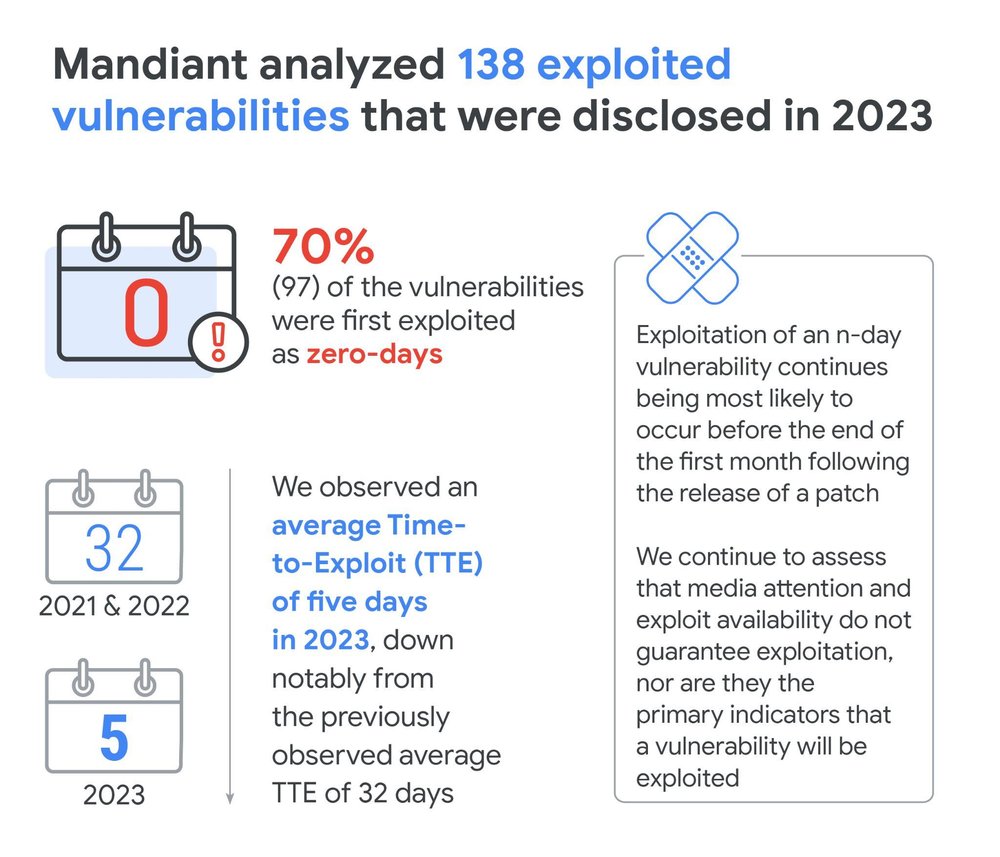
<
div class=”block-paragraph_advanced”>Mandiant analyzed 138 vulnerabilities that were disclosed in 2023 and that we tracked as exploited in the wild. Consistent with past analyses, the majority (97) of these vulnerabilities were exploited as zero-days (vulnerabilities exploited before patches are made available, excluding end-of-life technologies). Forty-one vulnerabilities were exploited as n-days (vulnerabilities first exploited after patches are available). While we have previously seen and continue to expect a growing use of zero-days over time, 2023 saw an even larger discrepancy grow between zero-day and n-day exploitation as zero-day exploitation outpaced n-day exploitation more heavily than we have previously observed.
While our data is based on reliable observations, we note that the numbers are conservative estimates as we rely on the first reported exploitation of a vulnerability. Frequently, first exploitation dates are not publicly disclosed or are given vague timeframes (e.g., “mid-July” or “Q2 2023”), in which case we assume the latest plausible date. It is also likely that undiscovered exploitation has occurred. Therefore, actual times to exploit are almost certainly earlier than this data suggests.
Exploitation Timelines
Time-to-Exploit
Time-to-exploit (TTE) is our metric for defining the average time taken to exploit a vulnerability before or after a patch is released. Historically, our analyses have seen reduced times-to-exploit year over year. Through 2018 to 2019, we observed an average TTE of 63 days. From 2020 to the start of 2021, that number decreased t
[…]
Content was cut in order to protect the source.Please visit the source for the rest of the article.
Read the original article: